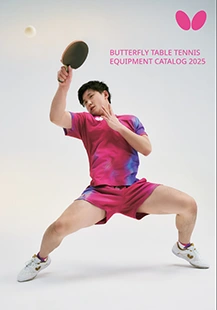Open Ended Drills
by Han Xiao
Over the last ten years or so, I’ve noticed that the overall level of table tennis coaching in the United States has improved drastically. This is reflected in the playing styles and technique of our players, from intermediate levels all the way up to National Team members. However, one of the negative symptoms of so many players accustomed to drilling with coaches and professional practice partners is a lack of attention to ball placement, which starts in practice and manifests itself in matches. More specifically, many players can block anywhere on the table, but find themselves attacking mostly to the backhand corner unless they are going for the kill.
How do we fix this problem? It starts primarily in practice with the drills that we’re doing. Since the majority of drills involve the player attacking to a coach or practice partner’s backhand corner repeatedly, it’s only natural that this will develop into a habit. It’s important to mix in some drills that are more open ended in order to break ourselves out of this habit.
There are tons of ways we can adjust our drills to be more open ended, simply by limiting the number of repetitions we do of the fixed drill before turning the rally into an open point. For example, some players like to practice forehand looping while covering two thirds of the table. The drilling player repeatedly loops to the partner’s backhand corner, while the partner backhand blocks to the two thirds of the table towards the drilling player’s forehand side. I can make this drill more open ended and similar to match conditions by changing it in the following manner:
- The point starts with the drilling player making a short backspin serve rather than simply beginning in the rally. The partner pushes wide to the forehand.
- The player doing the drill loops the first ball anywhere with medium strength. The partner blocks to the backhand. After one return by the player doing the drill to the backhand corner, the partner begins blocking to the two thirds of the table on the forehand side, which is the original drill. The player doing the drill loops to the backhand side.
- Don’t forget to practice staying balanced in and out of the table too, not just left and right. Multiball is an easy way to practice this, where the server can serve underspin either short or long anywhere on the table. If you don’t have an easy way to practice multiball, you can have your partner drop shot as many times as he or she wants, followed by a surprise deep push, after which you play the point out.
- After a few forehand loops, typically between 3 to 5, the partner switches the ball to the backhand corner of the drilling player. At this time, there is no more fixed pattern to the drill and the rally becomes free. The players play the point out with the objective of winning the point.
Notice that the intention is to limit the amount of strokes where things are patterned and to increase the similarity between the drill and an actual point in practice. The player doing the drill can practice serve, the placement of the first opening, transitions between forehand and backhand, footwork to get in position for forehand looping, and then trying to win the point using any means necessary. The partner also gets much better practice, including the very important skill of making a consistent first block against a real opening, not just an opening to the backhand corner, as well as being able to transition defense to offense in an attempt to win a point.
This can be done with almost any drill. If it’s a standard footwork drill involving repetitions of the same footwork rotation, simply limit the drill to a couple of rotations before allowing the point to play out. Add serve or serve return to the beginning of the point to further mimic match conditions. Sometimes, change the drill so that for the patterned portion of the drill, the drilling player plays to the forehand corner instead of the backhand corner, or practice with more left handed players to change the placement of the drill. Although the drill becomes an open point after a certain number of strokes, this can help you feel more comfortable placing the ball to the opposite corner in the opening stages of the point.
An important point to note is that open ended drills like these are not necessarily as effective at targeting individual techniques or problem areas. If you want to work on a single technique or a type of footwork, multiball training is probably the most effective method along with fixed drills that focus in on that aspect of your game. However, open ended drills are very effective in preparing for competition and you can transition more and more of your practice time to this type of drill as you draw closer to major competitions in the season.
The most important aspect of open ended drills is to remedy what we discussed in opening this article, which is getting out of the habit of always playing certain patterns and placing the ball in the same location repeatedly due to practice tendencies. By incorporating more open ended drills into our practice, we can not only get more comfortable playing more varied placements in matches, but also more easily integrate techniques we work on in drills into match play.
























